Birth name Walter Louis Garland Name Hank Garland Occupation(s) musician Role Musician | Instruments guitar, mandolin TV shows Grand Ole Opry Years active 1946–1961 | |
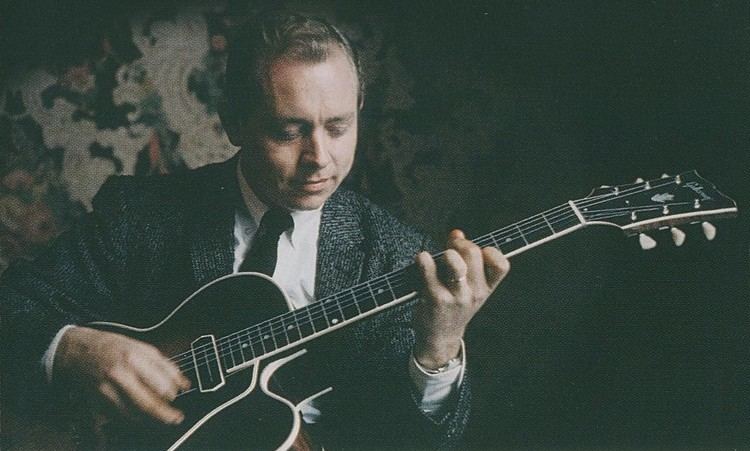 | ||
Spouse Evelyn Garland (m. ?–1965) Albums Jazz Classics Series: Jazz Winds from a New Direction Similar People Nicknames Sugarfoot, The Baby Cotton Picker | ||
Spartanburg music trail concert hank garland s sugarfoot rag
Walter Louis "Hank" Garland (11 November 1930 – 27 December 2004) was one of the most popular music artists in America in the early 1950s, a time when rock and roll was becoming a global phenomenon. Born as Walter Louis Garland, he started his music career as a country musician and gradually moved on to rock and roll. His first album Velvet Guitar was released in 1960.
Contents
- Spartanburg music trail concert hank garland s sugarfoot rag
- Facts
- Hank garland baby guitar chic unissued 1957
- Early and Personal life
- Biography
- Career
- Family
- Death
- Discography
- References

Facts
- Hank Garland’s first guitar was a used encore steel string that was bought by his father for him.
- His childhood idol was Arthur Smith. He idolised him so much that he developed an obsession for playing the guitar where he hooked an electric cord to the strings and would continuously play until he exhausted himself.
- In 1945, when he was only fifteen years old, he performed at the Grand Ole Opry. He was lovingly nicknamed "Baby Cotton Picker" by Paul Howard after the show.
- When he played the guitar for Elvis Presley’s sessions, he collaborated with many other legendary musicians. Some of them were Buddy Harman (drums), Bob Moore (bass) and Floyd Cramer (piano).
- In an interview given to Toy Caldwell published in the January 1981 issue of the Guitar Player magazine, Hank said that his favourite pattern of playing was quarter note triplets along with double timing two bars.
- Although considered one of the greatest guitarists of all time, his music career lasted for only fifteen years.
- After the horrifying car accident left him impaired, he learned to play the guitar again from scratch.
- It is widely believed that the numerous shock therapies given to him when he was in coma, were the reason for his muscular impairment.
- In the aftermath of the accident, Hank’s brother Billy Garland claimed that it was a murder attempt and not an accident.
- In the Nashville 1976 Fan Fair Reunion Show, he played a rendition of his classic composition Sugarfoot Rag. His performance created a profound emotional impact on the audience.
Hank garland baby guitar chic unissued 1957
Early and Personal life
Hank Garland was born in Cowpens, in the US in the state of South Carolina. He started playing the guitar when he was just six years old. This guitar was given to him by his father. He was a prodigy and soon he was spotted by local radio show organizers and started playing there.
During World War II he became addicted to his guitar to escape the horrors of war around him. He played diligently and it soon became his passion. After that, he moved to the city of Spartanburg where he was mentored by the great bluegrass and country musician, Don Reno. They both recorded and played for the WSPA-FM station in the city. Among the guitarists who dominated the music scene in Nashville in the late '40s and early '50s, Garland was one of them.
His most notable works were done at the Nashville studio where he worked alongside Elvis Presley from 1958 to 1961. In one of the most popular live shows of Elvis on March 25, 1961, Hank Garland played the guitar. Later that year in September in a tragic turn of events Hank Garland met with a car accident. He survived the accident but its severity made it impossible for him to continue playing the guitar.
Biography
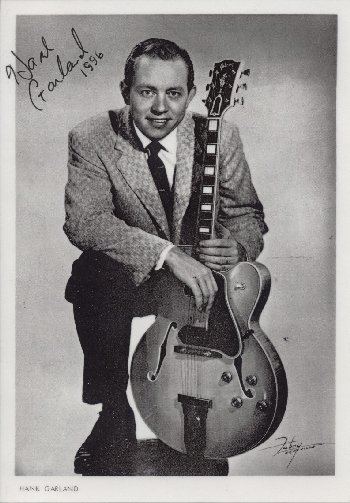
He appeared on local radio shows at just 12 years old and was discovered at 14 at a South Carolina record store. He moved to Nashville at age 16, staying in Ma Upchurch's boarding house, where he roomed with upright bassist Bob Moore and mandolin player & fiddler Dale Potter.
At age 18, Garland recorded his million-selling hit "Sugarfoot Rag". Garland appeared on the Jubilee with Grady Martin's band, and on Eddy Arnold's network and syndicated television shows.

Garland is perhaps best known for his Nashville studio work with Elvis Presley from 1958 to 1961, which produced such rock hits as: "I Need Your Love Tonight", "A Big Hunk O' Love", " I'm Coming Home". "I Got Stung", "A Fool Such As I", "Stuck on You", "Little Sister", "(Marie's The Name) His Latest Flame", and "I Feel So Bad".
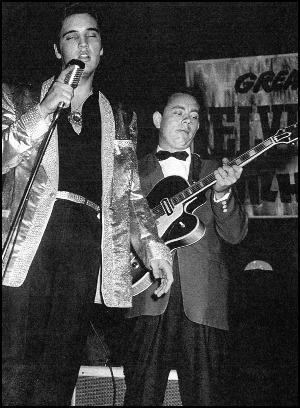
However, he worked with many country music as well as rock 'n roll stars of the late 1950s and early 1960s including: Patsy Cline, Brenda Lee, Mel Tillis, Marty Robbins, The Everly Brothers, Boots Randolph, Roy Orbison, Conway Twitty, Moon Mullican.

1957-58 marked the height of the rockabilly era. Garland's guitar drove such classic recordings as Little jimmy Dicken's "I Got A Hole In My Pocket", Benny Joy's "Bundle of Love" and "I'm Gonna Move", Jimmy Loyd's "You're Gone Baby" & "I've Got a Rocket In My Pocket", Lefty Frizzell's "You're Humbuggin' Me" Simon Crum's "Stand Up, Sit Down, Shut Your Mouth", and Johnny Strickland's "She's Mine", plus seasonal staples "Jingle Bell Rock" with Bobby Helms, and Brenda Lee's "Rockin' Around the Christmas Tree". He also backed major crossover artists as well. Don Gibson's "Sweet Sweet Girl" & "Don't Tell Me Your Troubles", Patsy Cline's "Let the Teardrops Fall" Ronnie Hawkins' "Jambalaya" and Faron Young's "Alone with You" spotlighted Garland's adept guitar work. Relatively obscure artists such as Jimmy Donley have reached cult status due in no small part to Garland's guitar artistry. Donley's 1960 record "My Baby's Gone" showcases another of Hank's superb riffs. In 1959-60 Garland's guitar drove other rockabilly and crossover songs such as The Collins Kids' "Lonesome Road"' Joe Melson's "Oh Yeah" Melvin Endsley's "Ain't It Fine", Huelyn Duvall's "Three Months to Kill", Morgan Twins' "Let's Get Going", and The Everly Brothers "Stick With Me Baby."
He also played with jazz artists such as George Shearing and Charlie Parker in New York and went on to record Jazz Winds From a New Direction, showcasing his evolving talent, along with Gary Burton on vibraphone, Joe Benjamin on acoustic bass and Joe Morello on drums. It is believed that Garland was the first to explore the use of the power chord in popular music.
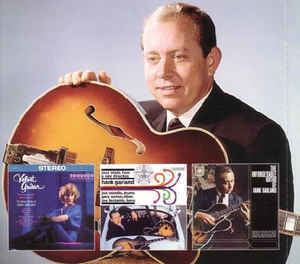
At the request of Gibson Guitar company president, Ted McCarty, Garland and fellow guitarist Billy Byrd strongly influenced the design of the Byrdland guitar, which derived from the Gibson L-5 guitar and is the guitar Garland is seen holding in the photograph above.
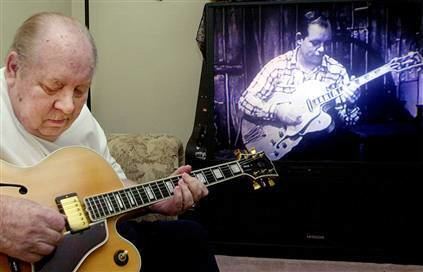
In September 1961, he was playing for the soundtrack of Presley's movie, Follow That Dream when a car accident left Garland in a coma that lasted for a week. He recovered with the help of his brother Billy Garland, but not sufficiently to return to the studios. It was believed that electroconvulsive therapy, prescribed by his doctors, may have caused more damage to his brain. Garland's brother, Billy, claimed that the crash was actually an attempted murder by someone in the Nashville music scene. Hank Garland was widely respected by his peers and Nashville producers such as Chet Atkins, Don Law and Owen Bradley.
When noted Nashville journalist Peter Cooper asked Chet Atkins a number of years ago who he thought the best guitar player to ever come to Nashville was, Atkins stated without hesitation, "Hank Garland." "Chet wasn't wrong," said Harold Bradley, an A-Teamer who, after the accident, took over for Garland as the most recorded guitarist in Nashville. "I am very humble about my playing because Hank Garland is the standard."
"I can't even imagine what he would have become had he not been in that accident," said Brad Paisley, a guitarist and contemporary country hit-maker who received a Grammy nomination for his own version of "Sugarfoot Rag." "You're talking about 40 years of lost innovation that could have come only from him."
Garland died on December 27, 2004 of a staph infection in Orange Park, Florida, where he lived with his brother, Billy Garland, and sister-in-law, Amy Garland. Upon his passing, The New York Times described Hank as "a studio artist known for musical riffs that could take a recording from humdrum to dazzling."
Hank was survived by two daughters, Cheryl Gruendemann and Debra Garland along with four grandsons and great grandchildren. He was preceded in death by his wife, Evelyn Garland in 1965. 'The epitaph on Hank's gravestone reads, "THE GREATEST GUITAR PLAYER THAT EVER WALKED PLANET EARTH."
Career
Hank Garland was quite young when he got his breakthrough. While living in Spartanburg he went to Alexander’s Music Store to purchase a string. At that time he bumped into Paul Howard who was a member of Grand Ole Opry, the weekly American country music stage concert in Nashville. After a few weeks, Hank performed at the Opry and he left the crowd in awe with his Boogie-Woogie instrumental.
At the age of eighteen, Hank produced one of his greatest pieces, Sugarfoot Rag. And it went on to sell a million copies. Nashville was the place where Hank stayed during the most glorious times of his career. He collaborated with Elvis Presley on hits like I Need Your Love Tonight, A Big Hunk of Love and I'm Coming Home to name a few. Hank’s style of playing and producing took a new route when he started working with Billy Byrd.
In 1960 Hank performed at the Newport Jazz Festival with a group that included Gary Burton, Chet Atkins and Bobby Moore. This live recording was released later as an album named After the Riot at Newport.
Family
Not much is known about Hank Garland’s parents, but he had a brother named Billy Garland. He was married to Evelyn Garland and had two daughters Debra and Cheryl Garland. After the fatal accident in 1961, his daughters and wife were constantly by his side as he recovered from a coma. Hank tried his best but his hands suffered irreparable damages from the crash and his guitar career was over. As fate would have it, in 1965 his wife Evelyn met with a car accident and died. Following that Hank started living with his parents who became his caretaker until their death. Hank Garland then went on to live with his brother Billy Garland and sister-in-law Amy Garland.
Death
In 2004 he breathed his last due to a staph infection.
